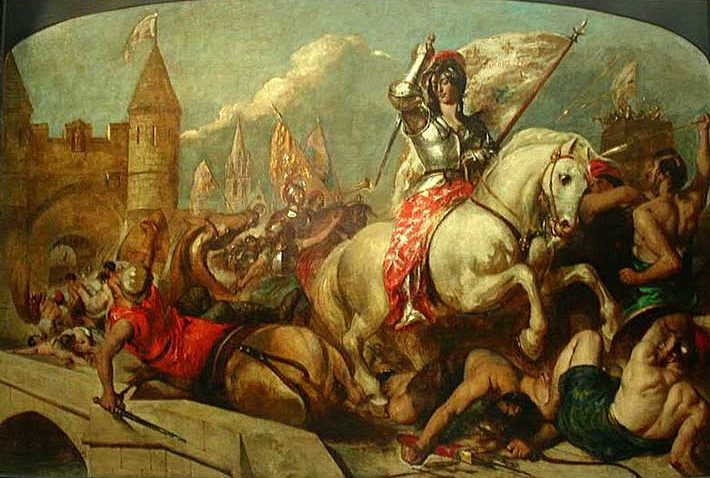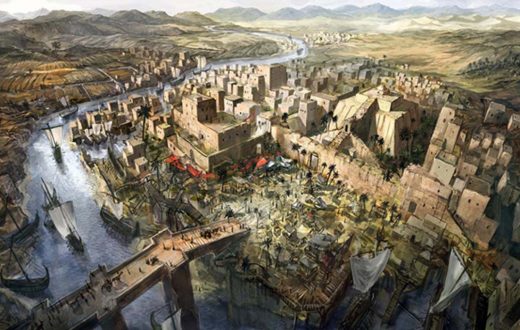Use of Longbow in the Hundred Years’ war:
In 1346, the English Forces demonstrated the power of longbow in the Battle of Crecy which changed the warfare. Because of the usage of Longbow, the English forces defeated the French forces in three battles i.e. the Battle of Crecy in 1346, the Battle of Poitiers in 1356 and the Battle of Agincourt in 1415. “The success of the longbow in these battles spelt doom for chivalric warfare (Beck, et al. 2009, p. 402).”
Joan of Arc:
A 13-year-old French girl, Joan of Arc, who started having visions which she believed were from the saints. These visions urged her to drive the English out of France to give the crown of France back to its rightful heir Charles VII, son of Charles VI. After a treaty signed in 1420, Henry V inherited the French crown upon the death of Charles VI. In order to drive the English forces out of France, Joan led the French army into the battle near Orleans in 1429. The battled was hard-fought for both the French and English. Eventually, Joan of Arc led the French army to the path of victory. Because of her bravery, Charles VII was crowned king in July 1429. She was later on captured in 1430 by the Burgundian, allies of England. She was handed over to the Church by the English which condemned her as a heretic and witch and was burned in 1431 (Beck, et al. 2009, p. 402 – 403 & Keen, 2017).
Impacts and the legacy of the Hundred Years’ War:
In the context of the impacts of this war, Beck, et al. (2009) argue that both sides experienced major changes. The end of the war resulted in the emergence of the feeling of nationalism in England and France. People no more considered the king a simple feudal lord but a national leader. Allmond (1988) in this regards argues, “War served to bring all members of a society, soldier and civilian, under the umbrella of national consciousness (p. 23).”
In France, the prestige and power of the monarch increased. In England, two noble houses fought for the throne which caused internal turmoil known as the War of the Roses. The end of Hundred Years’ of war is considered the end of the Middle Ages by some historians. Moreover, the religious devotion and the code of chivalry crumbled (Beck, et al. 2009, p. 403).
Within this context, Green (2014) highlights that the Hundred Years’ War refashioned the place of the Church, the role of the monarch, the reach of government, the relationships between the noble and ignoble, rich and poor and very identities of both England and France (p. 139). In addition to this, Green (2014) argues that the Hundred Years’ War brought about a revolution that fundamentally changed the character of military conduct and organization. It professionalized the warfare, ensued in the decline of chivalric warfare and the rise of artillery and infantry (p. 140). Keen (2017) also supports the argument of Green regarding the professionalization of the warfare. Rogers (1993) considers this change in the warfare a “military revolution”. He argues that during the Hundred Years’ War, “the most truly revolutionary changes in European military affairs took place.”
Conclusion:
The Hundred Years’ War fought between England and France lasted for 116 years but came to be known as the Hundred Years’ War in the nineteenth century. Although the relationship between England and France was acrimonious long before the 1337 and it remained so after the end of the hundreds years’ war in 1453 but the trigger of this long-lasting war was the claim of the English kings over the crown of France. There had been many phases of this war in which victory moved between England and France until France succeeded in taking over its territory except Calais in 1453. The rise of nationalism among the people of France and England and military revolution are the long-lasting legacy of the Hundred Years’ War.








